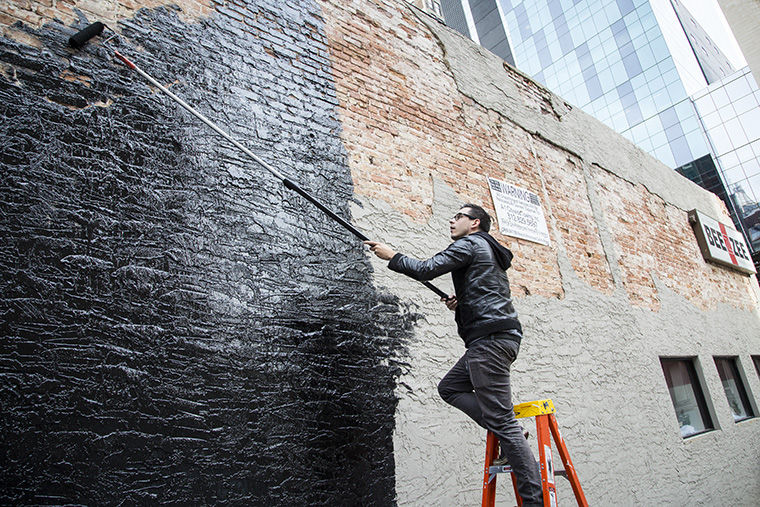Street artist gives campus building a new facade
Los Angeles-based street artist Morley created an interactive mural in partnership with Wabash Arts Corridor and Columbia College at 424 S. Wabash Ave.
December 14, 2015
The Wabash Arts Corridor has hosted 18 art installations from Columbia alumni, esteemed street artists and Chicago’s art community this year, including recent work from Los Angeles-based street artist Morley, according to Mark Kelly, vice president of Student Success.
To kick off his new exhibition, “The Writing’s On The Wall,” at Beauty & Brawn Art Gallery and Think Space in Logan Square, Morley painted an original mural on the wall of the 424 S. Wabash Ave. Building on Dec. 11 in collaboration with WAC and Columbia.
Morley said he loves creating something others can interact with, adding that being able to paint a mural in Chicago, with permission, is a real treat.
“I feel like a lot of my art is relatively simple, and the reason I do that is because I like people to fill in the blanks themselves,” Morley said. “I always say my work is only as good as someone else makes it.”
Morley specializes in bold, typographic posters with a mix of humor and hope. His recent installation on Wabash Avenue is called “Penny for your thoughts,” which depicts vacant space with thought bubbles that people can take photos with and post online with their own thoughts in the bubbles.
Lindsey Meyers, curator and owner of the gallery, said she felt an emotional attraction to his work. Meyers added that the two of them have been discussing the exhibit since June 2015.
“It has been a real labor of love,” Meyers said. “I hope he understands my love of street art and that I am not a traditional gallery.”
Meyers, who attended Columbia from 1995–1997, thought Morley’s work would be a fun addition to WAC. She said she hopes it will bring an uplifting spirit to the city during an “interesting” time in Chicago and the world.
“This is really going to reshape how we think of our campus,” Kelly said. “This is going to become a destination for those who care about public art.”
Morley said he was intimidated to be a part of WAC because it features many esteemed street artists he admires, but he is honored to be recognized among them.
Kelly said he also wants art to become more present in students’ daily lives so they can animate the culture of the city.
“We want to push our students out in the world,” Kelly said. “It is no longer enough for a student to be in a classroom, we have to go out into the world. I think the Wabash Arts Corridor becomes a metaphor for that thinking.”








